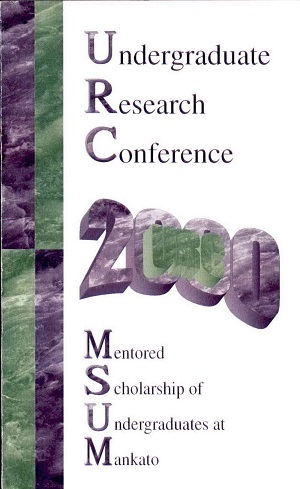The Rhetoric of Conspiracy Surrounding the "Son Of Sam."
Location
CSU
Student's Major
Communication Studies
Student's College
Arts and Humanities
Mentor's Name
Lisa Perry
Mentor's Department
Communication Studies
Mentor's College
Arts and Humanities
Description
On July 29, 1976, a reign of terror started sweeping across all of New York City. For 13 months, a gunman terrorized the streets and instilling fear into young couples around the city. Attacking only at night and only couples who were parking, the .44 Caliber Killer, as he was first known, left a bloody trail of thirteen victims. An obscure letter found at one of the crime scenes emblazoned the name "Son of Sam" in our memories forever. Former postal worker David Berkowitz was arrested on August 10, 1977, and quickly confessed to be the lone Son of Sam murderer. The case was officially closed; however, as recently as this past summer, new evidence has surfaced—evidence apparently overlooked in the rush to make an attest and restore some sense of normalcy in chaotic New York City. The new evidence has inspired a resurgence of discussion about the Son of Sam murders growing into a potential conspiracy. Conspiracy rhetoric is nothing new. From the assassinations of John F. Kennedy and Martin Luther King Jr. to the mysterious deaths of Elvis and Marilyn, our culture has been quick to grab and run with the possibilities of conspiracy. Therefore, today we will critique the rhetoric of conspiracy emanating from the Son of Sam case. The Son of Sam conspiracy is worthy of analysis for three reasons: first, the mythic proportions of the Son of Sam legend; second, The Son of Sam is one of the more popular serial killers in US history; and third and most important, Berkowitz has recanted his confession and is claiming he was set up— adding to our conspiracy. The analysis is conducted using concepts detailed by G. Thomas Goodnight and John Poulakos in their article, "Conspiracy Rhetoric: From Pragmatism to Fantasy in Public Discourse," published in the fall of 1981 Western Journal of Speech Communication.
The Rhetoric of Conspiracy Surrounding the "Son Of Sam."
CSU
On July 29, 1976, a reign of terror started sweeping across all of New York City. For 13 months, a gunman terrorized the streets and instilling fear into young couples around the city. Attacking only at night and only couples who were parking, the .44 Caliber Killer, as he was first known, left a bloody trail of thirteen victims. An obscure letter found at one of the crime scenes emblazoned the name "Son of Sam" in our memories forever. Former postal worker David Berkowitz was arrested on August 10, 1977, and quickly confessed to be the lone Son of Sam murderer. The case was officially closed; however, as recently as this past summer, new evidence has surfaced—evidence apparently overlooked in the rush to make an attest and restore some sense of normalcy in chaotic New York City. The new evidence has inspired a resurgence of discussion about the Son of Sam murders growing into a potential conspiracy. Conspiracy rhetoric is nothing new. From the assassinations of John F. Kennedy and Martin Luther King Jr. to the mysterious deaths of Elvis and Marilyn, our culture has been quick to grab and run with the possibilities of conspiracy. Therefore, today we will critique the rhetoric of conspiracy emanating from the Son of Sam case. The Son of Sam conspiracy is worthy of analysis for three reasons: first, the mythic proportions of the Son of Sam legend; second, The Son of Sam is one of the more popular serial killers in US history; and third and most important, Berkowitz has recanted his confession and is claiming he was set up— adding to our conspiracy. The analysis is conducted using concepts detailed by G. Thomas Goodnight and John Poulakos in their article, "Conspiracy Rhetoric: From Pragmatism to Fantasy in Public Discourse," published in the fall of 1981 Western Journal of Speech Communication.



